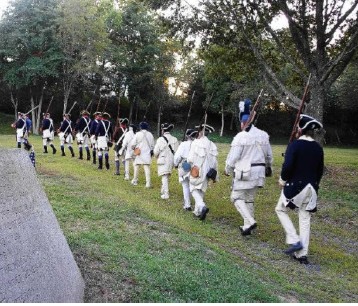Read the Museum’s Spring Newsletter for more details on our exciting Programs

Roger Williams and His World: A History in Documents
Roger Williams— his name is everywhere in Rhode Island. But how much do we really know about him? Charlotte Carrington-Farmer, Professor of History at Roger Williams University, believes that one way to understand Roger Williams and the complexity of his life is to read documents created during his lifetime.
Professor Carrington-Farmer’s new book, Roger Williams and His World: A History in Documents, reproduces forty documents that illuminate Williams’s world, his beliefs, and his interactions with others. She explains each document in the context of William’s life and times by defining 17th century words and concepts, and she invites us to read the original text and decide for ourselves what it tells us about Williams.
Please join us on Thursday, April 3 at 7:00 p.m., Professor Carrington-Farmer will be in our Museum Gallery to talk about Roger Williams’s personal, political, and spiritual worlds and how the documents in her new book help us understand them.
The program will take place in our Museum Gallery and will be livestreamed on our YouTube channel. Watch Live Stream on our YouTube channel here: https://www.youtube.com/@pdmac6899

In August of 1778, British troops had been in control of Newport and the rest of Aquidneck Island for nineteen months. The Rhode Island Campaign, the first joint French and American campaign of the Revolutionary War, was aimed at taking back the island.
Butts Hill Fort, the American command center during the battle and the largest Revolutionary War earthwork in southern New England, is on the National Register of Historic Places and is maintained by the nonprofit Battle of Rhode Island Association (BoRIA). But many locations in Portsmouth where fighting took place have never been studied.
In 2022, a group of volunteers began preliminary archaeological investigations at two privately-owned properties in Portsmouth. The battle-related items discovered during four days of metal detecting include a British coin, musket balls, a coat button, knee buckles, and shoe buckles.
Jay Waller, a Senior Archaeologist and Principal at The Public Archaeologist Laboratory, Inc., was one of the volunteers who investigated the two Portsmouth properties. Please join us on Thursday, April 24, Jay will be in our Museum Gallery to talk about what has been discovered, why it’s important, and what may yet be found.
The program will take place in our Museum Gallery and will be livestreamed on our YouTube channel. Watch Live Stream on our YouTube channel here: https://www.youtube.com/@pdmac6899

Historic New England (HNE), previously known as the Society for the Preservation of New England Antiquities, is the oldest and largest regional preservation organization in the United States. It owns 38 properties, four of them in Rhode Island.
Casey Farm in Saunderstown is HNE’s most-visited site, hosting about 50,000 visitors a year. The 300-acre farm was owned by one family from 1702 until 1955, when the last owner donated it to HNE. Casey Farm is a Rhode Island Certified Organic farm, growing vegetables, fruits, herbs, and flowers and raising barnyard animals. Its Climate Action Plan is the first such site-specific plan HNE has adopted.
Join us on Thursday, May 22 when Dan Santos, HNE’s Site Administrator for Southern New England, will talk about HNE’s Rhode Island properties, with a particular emphasis on Casey Farm. We will learn about the history of the properties, the people who lived in them, and how they are shared with the public today.
The program will take place in the Museum Gallery at 7:00 p.m. and will be livestreamed on our YouTube channel. Watch Live Stream on our YouTube channel here: https://www.youtube.com/@pdmac6899